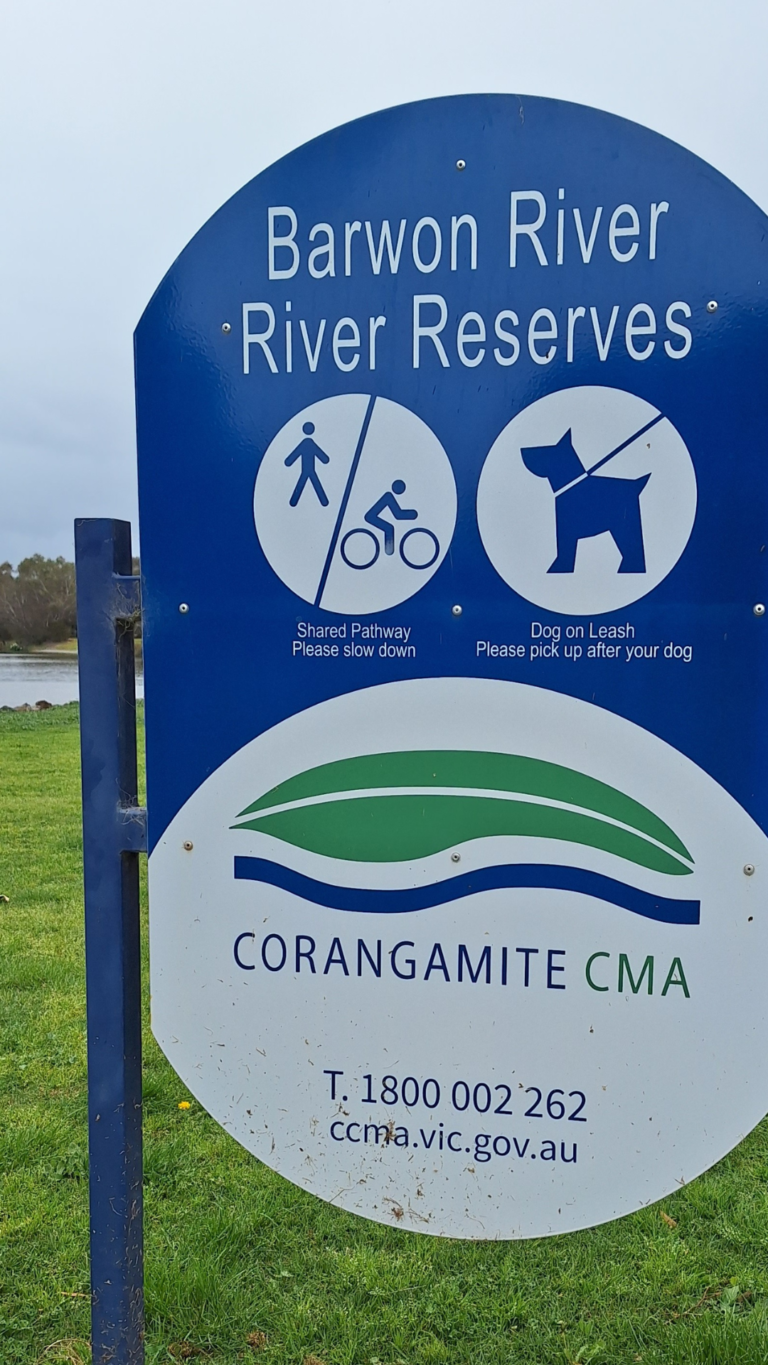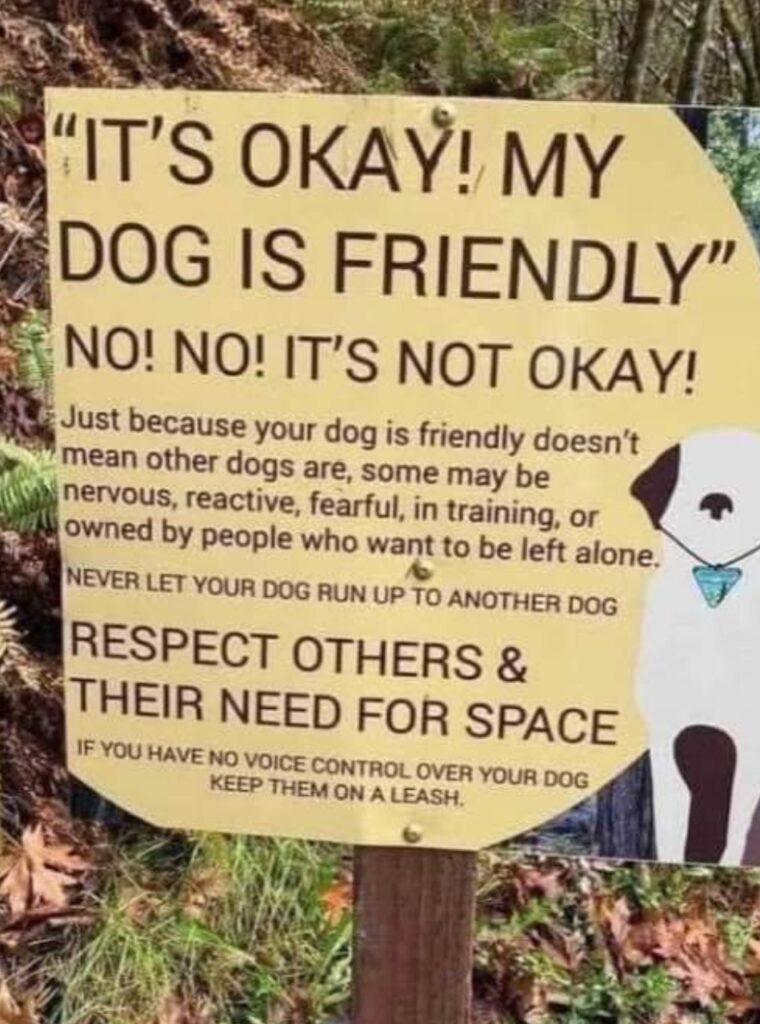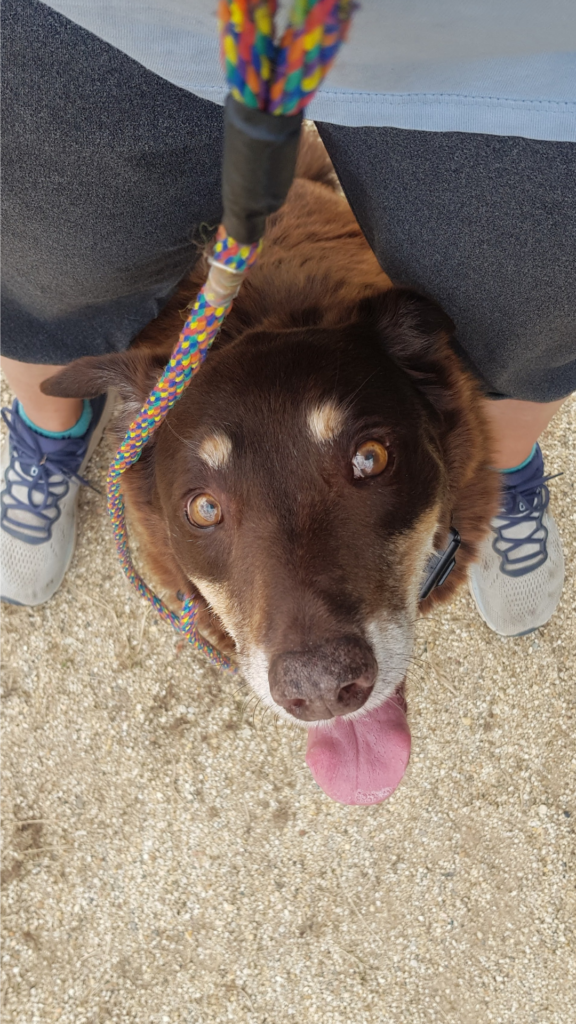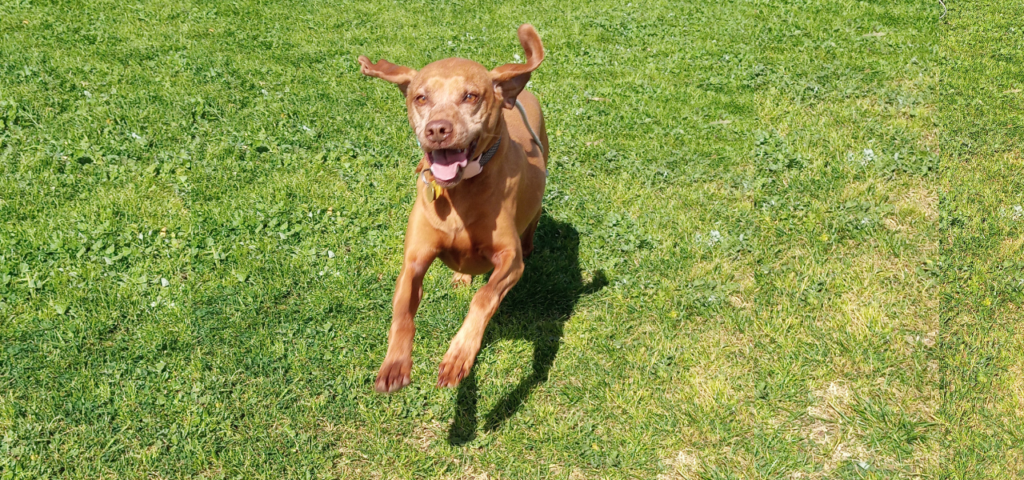As the weather warms up, people venture outdoors to enjoy the sunshine. With this, sighting off-leash dogs in areas designated on-leash is becoming increasingly common. While the love for our canine companions is profound, dog guardians must uphold responsible behaviour. Leash etiquette ensures safety and respect for all in public spaces.
Tails on the Pakington Street Ramp.

During a recent walk along the Geelong side of the Barwon River. We were approaching the end of our walk, having already passed and dodged three different off-leash dogs in an area designated on-leash. I watch the guy ahead of me unclip the lead on his dog and then use his body to block it from running back towards the two leashed dogs in my care.
Eventually, the dog gave up trying to run towards us. Then, the pup spotted a lady coming down the Pakington Street ramp. The dog instantly ran towards her, flying like Superman to jump up on her. I was too far away to hear if he attempted to call the dog away or just let it happen. The dog had eyes only for the lady. With concern, the dear woman moved to protect her stomach as the dog leapt and jumped up at her. All the woman wanted to do was protect her unborn child at that moment.
Shared Spaces, Shared Responsibility.
One of the primary aspects of responsible dog ownership is adhering to local leash laws. These regulations exist not as arbitrary rules but as essential guidelines to maintain order. Preventing conflicts and ensuring the safety of all individuals and animals.
Using a leash in designated areas shows respect for these rules and consideration for others. Emphasising that you are a responsible dog guardian. We share the environment with fellow people, nature and wildlife, including those who might not be as comfortable around our canine companions.
The pressing issue of inconsiderate behaviour from some dog guardians can lead to uncomfortable and potentially dangerous situations for dogs and humans. So, below, I will provide some tips to assist people when out and about in these situations.
"Effective leash training is not just about teaching a dog to heel;
it's about teaching them to understand and respect boundaries."
- Unknown
Understanding Canine Individuality.
With over a decade of experience in dog walking and training, it’s clear that a crucial aspect of this responsibility lies in understanding our dogs and respecting the boundaries of those around us.
A wagging tail doesn’t always signify happiness. It’s merely one aspect of a dog’s communication system. Reading a dog’s body language is vital, as not all tail wags mean friendliness.
Just as humans possess diverse personalities, needs, and comfort levels, our canine companions are equally unique. Expecting all dogs to get along is as unrealistic as expecting the same from people.
The Myth of “My Dog is Friendly”.
Understanding that not all dogs are eager to socialise is crucial. Consent is not implied in human and canine interactions. Each dog has its own personality, needs, and tolerance levels. Not all dogs or people are eager to make new friends.
One common scenario is when the owner of an off-leash dog reassures you with the statement, “It’s okay, my dog is friendly.” While their intentions may be good, this statement doesn’t guarantee a positive interaction and only considers one dog in those situations.
Asking for permission and ensuring a solid recall can help prevent unwelcome interactions. Fostering a more harmonious environment for everyone involved.
In a King’s K9 Dog Training survey, 75% of Respondents have had a negative experience with an off-leash dog. 78% of these respondents feel anxious when seeing off-leash dogs on suburban streets. And 53% feel nervous when seeing them off-leash in parks and trails.

Responsible Off-Leash Practices.
Responsible off-leash practices involve more than just unleashing your dog in public spaces. It starts with having a solid recall, ensuring you can call your dog back to you in the presence of others. Before allowing your dog to interact with strangers, always seek the other person’s consent, respecting their space and boundaries.
Per the City of Greater Geelong Dog Controls in Public Places Policy, dog owners must ensure their dogs are supervised and under effective control in designated off-leash areas. This control includes demonstrating audible command over the dog and keeping the dog within visual and audible range for immediate recall. Owners are responsible for recalling and restraining their dogs when interacting with others unless the other dog owners grant permission.
Dogs may not enter water habitats with wildlife or chase wildlife. Dogs attracted to moving wheels must be controlled, and menacing, dangerous, or restricted breed dogs cannot be off-leash in supervised areas. Additionally, handlers must carry means to clean up and dispose of dog droppings properly.
80% of survey respondents do not believe the local legislation is too strict. With 70% believing there need to be more designated off-leash dog spaces around Geelong and surrounding regions. With many sighting that there does not seem to be enough rangers employed by local councils to enforce the laws, there is a need for owner education.
Alternatives to Unleashed Freedom.
Long lines offer an excellent compromise for dog owners seeking to provide their pets more room to explore. These lines, ranging from 2 to 20 metres, allow dogs to roam while maintaining control.
Products like branded Flexi leads provide a secure way to let your dog explore. These can be clipped to a belt, ensuring freedom and safety, when used appropriately,
Navigating Off-Leash Dogs in Public Spaces.

In situations involving off-leash dogs without effective recalls or owners who don’t consider other people’s boundaries, it’s essential to stay alert. Here are a few tips to maintain your personal space in these instances.
Maintain Distance: When you spot an off-leash dog approaching, create distance between you and the other dog. The added space can minimise the chances of an unwanted interaction.
Treats as a Deterrent: You may create a distraction by tossing a handful of treats towards the charging dog. This can allow you to maintain a safe distance while the dog is occupied with food.
Use Verbal Commands: If the off-leash dog gets too close, use clear and assertive verbal commands to communicate with the dog and its owner. Commands like “Call your dog away” can be effective. Don’t be afraid to advocate for your and your dog’s safety and well-being.
Use Personal Protection Items: Products like a “Pet Corrector”, which can be purchased online, are compressed air, which can warn dogs to maintain distance. Alternatively, carry a smaller umbrella, which can be opened, at a safe distance to deter the dog from approaching and blocking them from entering your space.
Teach Your Dog “Middle” Position: Training your dog in the ‘Middle’ position is incredibly beneficial. This involves teaching your dog to sit between your legs on command. In this position, your dog learns to move with you, similar to loose lead walking, staying between your legs. This not only gives you precise control over your dog’s location while you tell the other dog “no” with your voice and body. Plus, dogs tend to feel secure and comfortable in this designated space.
A Call for Respect and Kindness.
The goal of this blog is to encourage others to exhibit kindness and understanding.
I am all for giving our dogs off-leash fun, and I am also one for respecting other people’s and dogs’ personal space… I have had too many dog training consults with puppies and dogs with dog-to-dog issues from being attacked by off-leash dogs.
Placing your dog on a leash when approaching others at least 5-10 metres away is a simple yet impactful gesture. It allows fellow humans and canines the comfort of personal space and shows your respect for their boundaries.
Importantly, apologise when an accidental encounter occurs with your dog approaching others uninvited. Act with integrity, and learn from the experience instead of reacting with frustration and upset.
Creating a harmonious environment where everyone can enjoy their time outdoors without fear or discomfort. Being a responsible dog owner means more than just providing love and care at home. It extends to how you interact with your dog and others in public spaces.
Embracing Responsible Canine Citizenship.
By understanding and respecting the diverse personalities of our dogs and those of others. We can create a harmonious environment where humans and canines coexist harmoniously. Let’s support a culture of respect, empathy, and responsible canine citizenship. Ensuring every dog, regardless of temperament, can enjoy the world alongside its fellow human companions.
For dog obedience training and behaviour modification services in Geelong, the Bellarine,
Surf Coast and Golden Plains regions, contact King’s K9 Dog Training.

